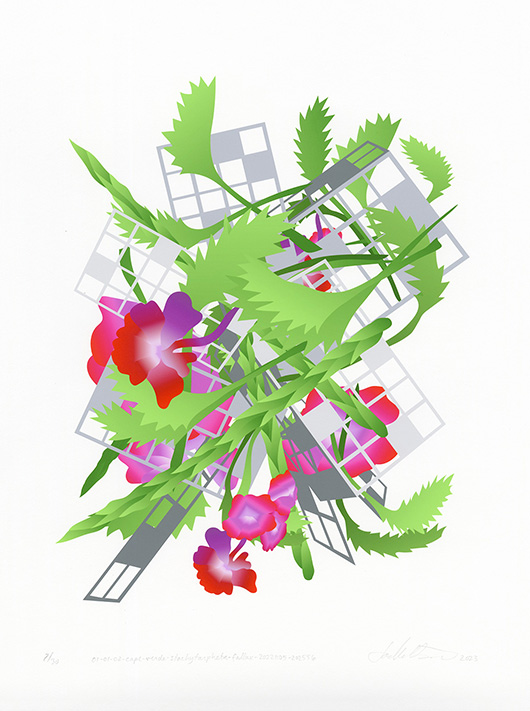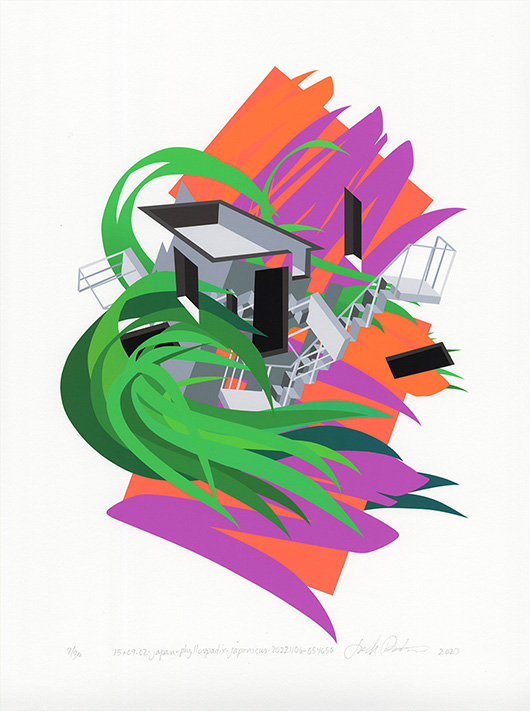Chasing the Sun
Chasing the Sun is a series of prints, wallpaper, and animations that stretch across three screens. Each screen of the video installation is divided into eight vertical sections—24 vertical stripes for the 24 time zones. Within each stripe, remnants of extinct plants and eco-friendly homes designed by women architects drift while colors shift according to the time at each represented location. The results are slow-moving and meditative, providing a space for audiences across cultures and ages to process climate grief within the context of new understandings of geological time.
The series of prints remix the imagery from the animations, and one flowering plant, the Hibiscadelphus woodii, endemic to Kauai, Hawaii is made larger than life as wallpaper. Once thought to be extinct, Hibiscadelphus woodii, or Wood's hau kuahiwi, was rediscovered in 2019 by a drone where it was growing out of steep, vertical face of a cliff.
Inspired by artist Joelle Dietrick’s travels to Germany, Chile and China and her five-year-old daughter’s wish to travel at the same pace as the sun to never sleep, Dietrick began work on the series during the COVID pandemic when natural systems felt out of control.
Below is a Chasing the Sun suite of 24 prints on Hahnemuhle PhotoRag 308g, each 15.75 x 11.75 in, edition of 30. Each is numbered, titled, and signed with the year in pencil, all in the lower margin. Every print's title includes the name of the depicted extinct plant, its country, the time zone when it was last seen, and the date and time stamp of the remix made with a browser-based randomizer. Printed at Davidson College in North Carolina in 2023.
...
Chasing the Sun was conceived in 2017 during a Fulbright in Germany, Chile, and China. Still a work-in-progress, the project would not be possible without Sophia Mundy as muse, Owen Mundy for his creation of the browser extension to generate images and collaboration on the animation, Sarah May and Matthew Clay-Robinson for their willingness to exhibit early versions, and studio assistants Evie Mulhern and Abigail Matthews for their research and renderings. Many institutions supported this project including the NEA, MacDowell, the Pollock-Krasner Foundation, North Carolina Arts Council, NC Arts and Science Council, and Davidson College.




























